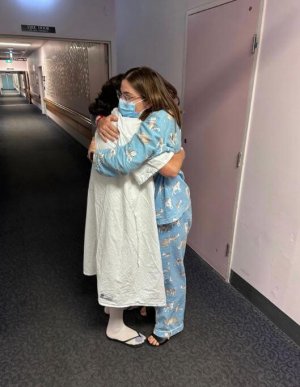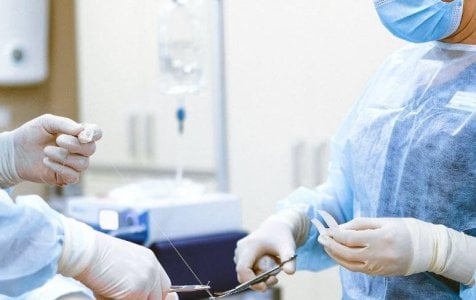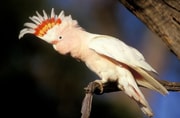Australian medical miracle: Successful revolutionary operation after mother's selfless donation
- Replies 3
It's incredible what science has managed to achieve in recent years. From advancements in technology to the discovery of potential life-saving solutions for diseases that were once deemed too difficult to cure. Indeed, science can sometimes create miracles.
Recently, a historic development in the medical field has been achieved. The first woman in Australia to undergo a uterus transplant has made a successful recovery, and the donor was none other than her own mother.
Kirsty Bryant has become the first person in Australia to undergo a uterus transplant as part of a research trial at The Royal Hospital for Women in Sydney.
The 30-year-old underwent the landmark surgery after receiving a uterus donated by her mother, Michelle Hayton. This means that Kirsty will potentially be able to carry a child in the same womb where her own life began.
‘I feel incredibly lucky that not only did I get accepted into the trial but mum and I have now been the first,’ Kirsty said.
According to reports, Kirsty suffered a life-threatening haemorrhage during the birth of her daughter. This led doctors to perform an emergency hysterectomy, leaving her unable to fall pregnant again.
Kirsty said she started looking at her options about six months after giving birth to her daughter, Violet. That was when she found the clinical trial at the Royal Hospital for Women that will see six uterus transplant surgeries take place over three years. Funds for the surgery were raised through donations.
Hopeful to be a part of the trial, Kirsty asked her mum for help.
‘She called me and she said to me “Hey mum, hypothetically if you could have a hysterectomy and I could have your uterus, would that be something you would do?”,’ Michelle, who is 53 years old, told reporters.
‘I didn’t hesitate, I straight away said “Yep, that’s not a problem.” Kirsty’s not just my daughter, she’s my best friend and I love her so much,’ Michelle stated.
Kirsty said she felt ‘incredibly lucky’ to be accepted into the trial and be the first recipient. The surgeries lasted more than 16 hours and involved a team of more than 20 medical professionals.
According to Gynaecologist Jason Abbott, many years of hard work and research led to the clinical trial in Australia. He also shared that Michelle’s surgery was the ‘hardest job of the two’ – it lasted roughly 10 hours.
‘This was nothing like any hysterectomy I've done,’ he stated.
Swedish surgeon Mats Brännström, who performed the world’s first successful uterus transplants which led to a live birth, supervised both operations. These types of transplants are designed to be temporary and lasts about five years, giving the woman enough time to have children. This is because the strong drugs used to suppress the body from rejecting the organ cannot be used for a longer period safely.
The first surgery in 2012 allowed two babies to be born, and since then there have been 90 successful transplants worldwide which have led to 50 births.
Incredibly, 32 days after her operation, Kirsty’s period returned. ‘That's obviously the first step to being able to start planning for an embryo transfer, we are hoping sort of middle of this year, all going well,’ Kirsty claimed.
She also stated that we felt ‘incredibly grateful’ that Australia is moving towards this type of research and giving other women options when it comes to family planning.
Dr Abbott said that the ‘true test’ will be seeing if the new uterus can support the growth of the baby.
‘It's not about having a period, it's about having a baby,’ he added.
Dr Rebecca Deans, the gynaecologist and lead researcher for the trial, told reporters that she was ‘amazed’ at the successful surgery. She also explained why Michelle’s surgery was more difficult than Kirsty’s.
‘The donor surgery, you need to remove not just the uterus but all the vessels surrounding it and you need to take them out quite laterally, or wide, from the organ so that you can then attach them to the greater organs in the recipient, which sit out on the side walls on the abdomen,’ she stated.
Dr Deans also claimed there were postoperative challenges with Kirsty needing blood transfusions 24 hours after the surgery because she started suffering from significant blood loss. Her mum, on the other hand, contracted a serious infection and is yet to feel any sensation in her bladder.
There are plans to perform 11 more womb transplants this year, although Dr Deans’ team is still seeking to raise $1 million to keep the program viable until the end of the research term. Five of the donated uteruses for future use will be from live donors and six are from deceased women.
Meanwhile, Kirsty underwent IVF and has six embryos ‘ready to go’. She’s now waiting to begin this process two to five months after her surgery.
She now hopes to have two more children using the transplanted womb within the five-year window.
‘So, I am going to, potentially, carry a baby in the same uterus, in the same womb I was grown in,’ she said.
 Members, what do you think of this incredible story? If you were in the same situation and given the right circumstances, would you be willing to donate an organ as well? Please share your thoughts in the comments below!
Members, what do you think of this incredible story? If you were in the same situation and given the right circumstances, would you be willing to donate an organ as well? Please share your thoughts in the comments below!
Recently, a historic development in the medical field has been achieved. The first woman in Australia to undergo a uterus transplant has made a successful recovery, and the donor was none other than her own mother.
Kirsty Bryant has become the first person in Australia to undergo a uterus transplant as part of a research trial at The Royal Hospital for Women in Sydney.
The 30-year-old underwent the landmark surgery after receiving a uterus donated by her mother, Michelle Hayton. This means that Kirsty will potentially be able to carry a child in the same womb where her own life began.
‘I feel incredibly lucky that not only did I get accepted into the trial but mum and I have now been the first,’ Kirsty said.
According to reports, Kirsty suffered a life-threatening haemorrhage during the birth of her daughter. This led doctors to perform an emergency hysterectomy, leaving her unable to fall pregnant again.
Kirsty said she started looking at her options about six months after giving birth to her daughter, Violet. That was when she found the clinical trial at the Royal Hospital for Women that will see six uterus transplant surgeries take place over three years. Funds for the surgery were raised through donations.
Hopeful to be a part of the trial, Kirsty asked her mum for help.
‘She called me and she said to me “Hey mum, hypothetically if you could have a hysterectomy and I could have your uterus, would that be something you would do?”,’ Michelle, who is 53 years old, told reporters.
‘I didn’t hesitate, I straight away said “Yep, that’s not a problem.” Kirsty’s not just my daughter, she’s my best friend and I love her so much,’ Michelle stated.
Kirsty said she felt ‘incredibly lucky’ to be accepted into the trial and be the first recipient. The surgeries lasted more than 16 hours and involved a team of more than 20 medical professionals.
According to Gynaecologist Jason Abbott, many years of hard work and research led to the clinical trial in Australia. He also shared that Michelle’s surgery was the ‘hardest job of the two’ – it lasted roughly 10 hours.
‘This was nothing like any hysterectomy I've done,’ he stated.
Swedish surgeon Mats Brännström, who performed the world’s first successful uterus transplants which led to a live birth, supervised both operations. These types of transplants are designed to be temporary and lasts about five years, giving the woman enough time to have children. This is because the strong drugs used to suppress the body from rejecting the organ cannot be used for a longer period safely.
The first surgery in 2012 allowed two babies to be born, and since then there have been 90 successful transplants worldwide which have led to 50 births.
Incredibly, 32 days after her operation, Kirsty’s period returned. ‘That's obviously the first step to being able to start planning for an embryo transfer, we are hoping sort of middle of this year, all going well,’ Kirsty claimed.
She also stated that we felt ‘incredibly grateful’ that Australia is moving towards this type of research and giving other women options when it comes to family planning.
Dr Abbott said that the ‘true test’ will be seeing if the new uterus can support the growth of the baby.
‘It's not about having a period, it's about having a baby,’ he added.
Dr Rebecca Deans, the gynaecologist and lead researcher for the trial, told reporters that she was ‘amazed’ at the successful surgery. She also explained why Michelle’s surgery was more difficult than Kirsty’s.
‘The donor surgery, you need to remove not just the uterus but all the vessels surrounding it and you need to take them out quite laterally, or wide, from the organ so that you can then attach them to the greater organs in the recipient, which sit out on the side walls on the abdomen,’ she stated.
Dr Deans also claimed there were postoperative challenges with Kirsty needing blood transfusions 24 hours after the surgery because she started suffering from significant blood loss. Her mum, on the other hand, contracted a serious infection and is yet to feel any sensation in her bladder.
There are plans to perform 11 more womb transplants this year, although Dr Deans’ team is still seeking to raise $1 million to keep the program viable until the end of the research term. Five of the donated uteruses for future use will be from live donors and six are from deceased women.
Meanwhile, Kirsty underwent IVF and has six embryos ‘ready to go’. She’s now waiting to begin this process two to five months after her surgery.
She now hopes to have two more children using the transplanted womb within the five-year window.
‘So, I am going to, potentially, carry a baby in the same uterus, in the same womb I was grown in,’ she said.
Key Takeaways
- Kirsty Bryant, 30, has become the first person in Australia to undergo a uterus transplant.
- The operation was made possible by her mother Michelle Hayton’s generous decision to donate her own uterus.
- The surgery was overseen by world-renowned Swedish surgeon Dr Mats Brännström and involved 20 medical professionals.
- After the operation, Kristy's period returned and it is hoped that embryo transfers onto her new uterus will take place in a few months this same year.









